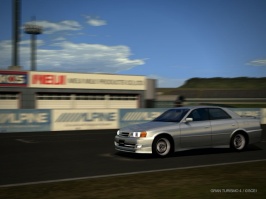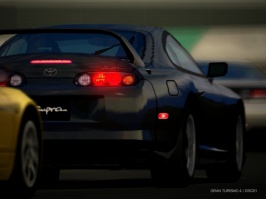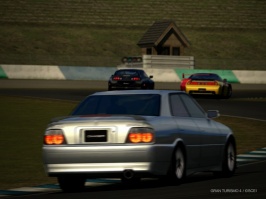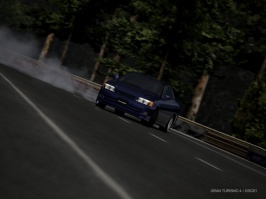Compact Confrontation of Europe
Peugeot 307 XSi '04
VS
Renault Megane 2.0 16V '03
VS
Citroën Xsara VTR '03
VS
Volkswagen Golf IV GTI '01
VS
Alfa Romeo 147 2.0 Twinspark '02
What could possibly create more rumble on European car market than medium-sized, all-rounder compact vehicles? Approved as rational choice with a number of engine and trim levels, these cars often come in slightly spiced format, which in best case can become representative of the entire class, setting good benchmark for all others. Since Gran Turismo nourishes these vehicles more than anyone, I decided to grab few from the basket and put them to hard-testing of mine.
Peugeot 307 XSi '04
HISTORY
The model responsible for replacing the 'outdated' 306 is known as 307. Initial reactions among journalists highlighted certain build quality issues and lack of appropriate performance model that would fearlessly stand by other hot-hatches of that time. Nevertheless, the 307 was eventually recognized for being highly competitive in various domains over its rivals - space, price, trim levels, you name it. Revisions brought in 2005 improved reliability and even introduced that unknown Feline model that tried to run away from all the comfort the 307 had in large amount.
Sadly, we don't get to play with the Feline, we got the XSi instead. The XSi models are said to be sporty-oriented models with decent visual additions and allegedly somehow firmer suspension kit. Very little information can be found about that trim range except they are sometimes positioned one step below GTi or Rallye machines, mostly due to moderately powerful engines and certain mechanical enhancements on or beneath their bodies. Hopefully this leaves an effect in GT4 or else...
 What is wrong with this color, I can't even...
What is wrong with this color, I can't even...
The 307 is a new player in town and yet needs to prove itself. This is going to be a difficult task considering the modest engine output and somehow boring styling. We shouldn't forget that Peugeot's lineup in the game is still packed with several popular performance sweets, leaving very narrow space for the 307 to squeeze by and shine.
ENGINE
The 2.0 liter
EW10 engine reinforces the car with 140 horsepower, which seems like a great deal as long as we don't look at the weight figure; that body needs to be towed around, it ain't light at all! Nevertheless, the engine is very good in what it does - increasing power gradually. Smooth operation is further backed by carefully aligned gearbox, not even sports cars of higher class could offer such collaboration. On the whole - good enough, it certainly exceeded my expectations.
HANDLING
Engineers at Peugeot were keen on penetrating hot-hatch standards even with model 307, using XSi as a working mule for this task. Sadly, along the way they failed to harmonize certain elements properly, leaving overall result somewhere around the average.
There is a good chance that on a very first run the car will leave positive impression on you. The chassis is surprisingly steady and responsive, showing sporty tendencies on every corner. While general speed isn't anything special, posture the car tries to set fits into world of racing quite well. Unfortunately, further driving will reveal its true secrets.
Decelerating with this car may cause understeer; while aiming for stable and rapid turn-ins I couldn't rely on weight transfer as on other FF cars. That is not very desirable, what other trump cards do FF cars have anyway? Understeer is also noticeable on corner exits, usually backed by strong and blunt resistance from the front end. In addition, that chassis is not supported by suspension successfully, almost as the body is too big for it. This makes hard to estimate what those tires are doing and how far the car can be pushed. It is like you're driving a car and Usually all negative handling traits on this car will appear suddenly for that reason. On S-corners it was also prone to lateral grip loss, sometimes even after turn-in.
Maybe strengthening that suspension could help, but I didn't have enough motivation to try that out. You should, at least for the sake of that engine.
Renault Megane 2.0 16V '03
HISTORY
There was once a Megane Coupe, small rabbit that never got the publicity it deserved. In GT2 it could be transformed into a Megane Maxi, an F2 Kit car, while in GT4 its engine further evolved with IDE technology that made Megane's good performance even better. The first time I drove the car in GT4, I was very pleased with what it offered. I wonder if the Megane II can excel its potential.
WHAT IS NEW?
I have never driven the Megane II before, so it better be good, expectations are high. Just as with the 307, performance numbers do not follow potency of its predecessor, but maybe in handling department something interesting can be found, Renault is an expert in this after all. The new approach to visuals makes me displeased, but it can't be helped.
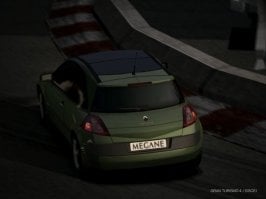 Ah, photo techniques can do miracle! Still displeased?
Ah, photo techniques can do miracle! Still displeased?
The Megane is backed by a good reference; turbocharged version of the F4R engine is responsible for moving ability of the RenaultSport Megane II, available in GT5 onward. In GT4 we get to play with the bare version of that engine. Sadly, power chart around the peak zone is significantly steeper than on the 307, almost like on turbocharged cars. Although the engine is mated to a 6-speed gearbox, wide nature of that gearbox doesn't match characteristics of the engine. The aftermarket Close gearbox is useful on tracks where top speed of 170 kph cannot affect your rank. Another bad news is that not even turbo kits can satisfactorily rectify the power chart, so using full potential of the engine is very tricky.
HANDLING
After going 'around the block' few times I realized the Megane wasn't built for the purpose of advertising sports driving. Yep, I don't feel any sports undercarriage down there, it seems the engineers took the safer path and left business with performance to RenaultSport. Good call or...?
Softer suspension implies more body roll and more leaning to either side, something you get to feel on the Megane as well, obviously. However, this is not necessarily a bad thing. Unlike the 307, the Megane travels over bumps smoothly, producing more lateral grip once certain amount of weight fully saddles the outside tires. It can be driven neutrally just as the 147, albeit with more caution required when playing with weight transfer - keeping all those pounds in place on such loosened suspension is not easy as it may seem. Nevertheless, this allowed me to play on the edge of its capabilities and enjoy learning how to use its potential, something I could never say for the 307.
The Megane is one of those 'good' cars on which suspension and chassis are well matched together, within expectations people have when inspecting this class and level of power. For that reason, utilizing and understanding its current and possible potential is transparent. Mind you, all other cars on the test (apart from the Golf IV GTI) had certain elements that could mislead you when estimating their potential, even if they may be positive in general.
Citroën Xsara VTR '03
HISTORY
Some of us may remember the 1.8 liter Xsara Exclusive from Gran Turismo 2. Contrary to what the name suggested, the Xsara wasn't more or less 'exclusive' than an average Kei car, although it did fit well alongside other compact cars of that range. The Xsara's popularity was polluted by presence of much smaller Saxo VTS and Peugeot 306 S16, both being performance 'hatches that no longer appear in the series. The 306 S16 is strongly related to the Xsara VTS, cheaper alternative that also never found its way in any GT game. Much better situation surrounded the Rally car that keeps appearing in GT games in this or that form.
WHAT IS NEW?
The face-lifted VTR model is seemingly not much different from the original Xsara 1.8i. Both power and weight have remained almost unchanged, which means that major differences should be noticeable on the exterior. Different headlights and taillights, VTR badge, 3-door body configuration and mini rear spoiler conclude the list of novelties. However, the VTR badge suggests that the Xsara is equipped with better suspension and steering system. And because the face-lifted version was said to be generally stiffer, I think we have enough material not to write the Xsara off yet.
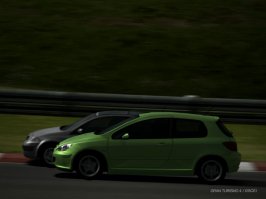 So alike, yet so different...
So alike, yet so different...
Face-lifted models no longer offered 1.8 liter engines, the same power could now be delivered using smaller 1.6 liter unit. This engine loosely follows pattern of the 307's EW10, but to really be on par with it, it should've had better mid-range output. Nevertheless, I'm more concerned about the overall power the engine produces, the current value makes the Xsara simply slow. You should use savings from the purchase to raise the power by 20 to 30 horsepower, the chassis can take it. The exhaust sound reminds me of the old OHV engines we had on the Mini Coopers from earlier games in the series. Suits the Xsara well somehow, really catchy tune.
And here is a fun fact - the boring C3 model can be upgraded with a supercharger (ultimate power upgrade in this game) whereas the Xsara can't, even though both are powered by the same engine. Quite disturbing, don't you agree?
HANDLING
There is no doubt that the Xsara should stay away from head-to-head challenges against either of these challengers, it simply can't keep up with their speed. Of course, just because it doesn't offer enough ponies doesn't mean it is incapable of invoking fondness in you. I spent more time with the Xsara than with any other car on this test, simply because I realized how charming it is when going around corners.
The steering is fairly quick and chassis almost unbelievably rigid. The latter is close to what the 307 offers, but without understeer and with more feedback coming from the road. While on straight lines it will be smoked by any other car due to lack of power, on corners it keeps the average speed just as high as the Megane or the 307.
Overall driving pleasure felt while going around corners is as high as on the 147, albeit with one minor drawback - stiff configuration of the suspension occasionally affects grip of the front axle when traveling over bumps. I'm sure more weight on the car in general would turn the Xsara into winner, but when I recall it could clear long, bumpy sweepers on Le Mans track without losing grip at all, you should take the complaint above in reserve.
Volkswagen Golf IV GTI '01
HISTORY
Back in the days of Gran Turismo 2, Polyphony had enough courage to present total of four engine entries for the Golf Mk4: standard and turbocharged 1.8 liter unit, VR5 and VR6. As in the game, the 1.8 liter models were badged as GTI, although this had no real effect on their performance; by the time the Mk4 generation entered the production, the GTI badge had already been downgraded to a simple trim level. Naturally, this did not please GTI fans, although some people praised range of engines that could be had with the GTI badge. Gran Turismo 4 reintroduced the GTI range once again, adding models Lupo, Polo and the Mk5 Golf GTI, arguably the first true GTI since the original.
WHAT IS NEW?
The Golf Mk4 is no longer a new car as it used to be in the past, now it must be bought from used car dealership. It is not going to be a cheap choice either, I got mine for 23,850 credits and found further investment inevitable. One or two colors are missing but we got neat BBS wheels as restitution.
ENGINE
Remarkable turbocharged unit, what else can I say? Flat and broad delivery of torque from 1750 to 4600 rpm along with smooth distribution of power on high-rpm zone without drop-off sequence of any kind really deserves admiration. This is a great engine and undoubtedly the most valuable part of the car. You don't even need to replace the gearbox because the stock one works fine and fast enough. The only thing I could point out is the lack of punch you would expect on a turbocharged car, but on FWD compact cars aggression is not necessarily the only solution for everything anyway. So far the GTI badge is justified, but don't forget we haven't reached the handling section yet.
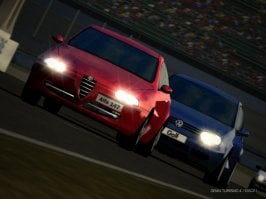 Exciting duel takes place at Motegi!
Exciting duel takes place at Motegi!
And now we just did. I wish we haven't as it clearly nullifies everything good we have mentioned about its engine. And BBS wheels.
So, where should I start? The chassis is weak, making the car unresponsive on turn-ins. Naturally, when you mount such chassis on soft suspension configuration, you can't really expect to receive groundbreaking hot-hatch credibility. Overall cornering is sluggish, with understeer regularly emerging to surface upon applying the throttle. In addition, the car is prone to body roll whenever (modest) cornering capabilities are fully used. Have you noticed sparks coming out when the car pitches during breaking? Default ride height is really low...
While I can understand that fourth generation Golf GTI was performance-wise degraded to appeal to wider audience, I would still expect better behavior from a compact car that produces 150 horsepower from a turbocharged engine. That poor handling scheme we get to see in the game can only be outclassed by ridiculous amount of credits you'll have to spend in order to bring the car's potential to operable level (notice that the car itself is quite fast, but quite difficult and often annoying to drive). After tweaking values of the most expensive suspension kit (because cheaper won't solve anything), I realized that handling became much sharper and thus closer to what I would expect from a GTI Golf. Still, to fix the chassis problem, you'll probably have to install roll cage and restore rigidity.
Yeah, we're talking about 80k credits worth investment. Better run that Capri event once more.
Alfa Romeo 147 2.0 Twinspark '02
HISTORY
The 147 continues to follow in the footsteps of the 145 2.0 Twin Spark... or at least is trying to do so. With no Cloverleaf badge around and allegedly softer suspension setup, the 147 is having a hard time retaining charisma of its predecessor. No need to worry, though. When it comes to sports performance, Alfa Romeo models tend to be highly competitive and adaptive. Why should we doubt the 147 then?
WHAT IS NEW?
Both 2.0 liter Twin Spark and 3.2 V6 GTA are clickable options. Nothing more, nothing less. The problem, however, is whether a humanoid should opt for the 2.0 liter model or not, given that brutal power effusion of the bad-ass 3.2 V6 machine is just a click away. I wonder if the 2.0 model had to be featured anyway, but at least we can include Alfa Romeo in this test of compact cars.
ENGINE
With all those variations of acknowledged 1.9 JTD diesel engine around, Twin Spark engines are slowly falling into oblivion. No worries, I'm now keeping the flame burning by writing about one of them. You're welcome.
The 2.0 liter 'Sparky' engine powering the 147 sounds very mature, that exhaust pipe probably had more fun being used by the engine than I did. Power output is fine, albeit shorter gears would help the engine satisfy high-rev nature it is leaning to. Gear shifting itself should've been a bit quicker as well. I'm saying all this because the car's handling screams for some pavement action, so it is a bit unusual that power-plant wasn't built to meet this request in first place. Probably a bug by Polyphony.
 Try me out, I won't disappoint you!
HANDLING
Try me out, I won't disappoint you!
HANDLING
Quick steering and responsive handling? Alfa Romeo can take care of that. Certain compromises you have to withstand elsewhere are often a big price to pay, but where else could you find such charismatic and performance-oriented products? For that reason, even if the 147 may seem a bit ordinary near every other hot-hatch we get to drive in this game, you can bet that here in its own class, it will be a tough opponent to beat. This racing scenario, this is Alfa's territory.
As we suggested before, steering is quick and well suited for sports driving. Movements of the chassis imply the chassis itself isn't as composed as that of the 307 (it even shivers at times!), but it allows the car to take tighter line on slow-paced corners. The suspension allows just enough pounds on all four tires to ensure grip is acceptable, yet it keeps the car responsive enough. Yes, I noticed that certain deal of comfort compromised its handling, but I could always keep average cornering speed surprisingly high, something neither Xsara or the 307 could achieve that easily without showing weak points, in spite of their firmer bodies.
Besides, good drivers will notice that it is possible to drive the car without understeering - to be able to stay on your path upon deceleration or acceleration is really admirable virtue. I can't deny it, the 147 is a very good car.
Final Standings
Alfa Romeo 147 2.0 Twinspark '02
Citroën Xsara VTR '03
Renault Megane 2.0 16V '03
Volkswagen Golf IV GTI '01
Peugeot 307 XSi '04
CONCLUSION
Instead of usual paragraphs, I summarized my thoughts in few lines for each car. Take a look:
147 - undoubtedly the fastest and most balanced machine in the group. We have good soundtrack coming from the exhaust pipes, enough power and handling to take care of it. Some people will find gearbox and visuals defective, but from my perspective that ain't enough to endanger its overall position. It really deserves top place.
Xsara - if only it had better front end suspension configuration, it would have taken the throne. Blue color is really curious. Entertaining to drive in spite of its lack of power.
Megane - cornering potential is very good, at times on par with the 147. Powerplant should have been much better, it really affects everything else to a large degree. Visuals = zero.
Golf - very demanding and potentially highly expensive car. The handling is so messed up that even car's magnificent engine won't be able to shine as it should (let's not forget BBS wheels). Skillful tuners (and drivers) required.
307 - it is good when chassis and suspension work together, but that usually isn't the case. Some elements are better than others, some could simply outclass everything else we have tested here, but as a whole it is a miss (generally). Visuals = zero. Now, where is my dear 206 S16?
Technical Specifications
Code:
Car: Peugeot 307 XSi '04 --- Renault Megane 2.0 16V '03 --- Citroën Xsara VTR '03 --- Volkswagen Golf IV GTI '01 --- Alfa Romeo 147 2.0 Twinspark '02
Status: New --- New --- New --- Used --- New
Price: $27,940 --- $26,390 --- $21,850 --- $23,850 --- $30,590
Engine: L4 DOHC, 1997 ccm --- L4 DOHC, 1998 ccm --- L4 DOHC, 1587 ccm --- L4 DOHC, 1781 ccm --- L4 DOHC, 1969 ccm
Power: 141 HP @ 6000 rpm --- 136 HP @ 5500 rpm --- 107 HP @ 5800 rpm --- 148 HP @ 5700 rpm --- 148 HP @ 6300 rpm
Torque: 189.92 Nm @ 4100 rpm --- 191.00 Nm @ 3750 rpm --- 146.90 Nm @ 4000 rpm --- 209.13 Nm @ 1750-4600 rpm --- 180.12 Nm @ 3800 rpm
Aspiration: NA --- NA --- NA --- Turbo --- NA
Drivetrain: FF --- FF --- FF --- FF --- FF
Weight: 1260 kg --- 1230 kg --- 1180 kg --- 1280 kg --- 1280 kg
Wheelbase: 2608 mm --- 2625 mm --- 2540 mm --- 2511 mm --- 2546 mm
Tires: 205/55 R16 --- 205/55 R16 --- 195/55 R15 --- 205/55 R16 --- 205/55 R16
0-400m: 0'17.436 --- 0'17.616 --- 0'18.707 --- 0'17.058 --- 0'17.165
0-1000m: 0'31.292 --- 0'31.644 --- 0'33.832 --- 0'30.682 --- 0'30.902
Elasticity (0-100 in 2nd gear)*: 204,5 m --- 202,9 m --- 269,6 m --- 200,5 m --- 226,5 m
Braking (kph: 160 > 60): 72.3 m --- 73.4 m --- 64.8 m --- 68.6 m --- 64.9 m
Opera Paris Lap (N2 tires): 1'51.160 --- 1'50.387 --- 1'52.238 --- 1'50.006 --- 1'48.877
Gymkhana**: 1'00.0 --- 1'01.4 --- 1'00.6 --- 1'00.3 --- 0'59.0
____________________________________
* Identical gearbox setup was applied to each car.
** Path I made using the Gymkhana course in the game. Timing was manually recorded. Short thoughts:
307 - surprisingly agile and responsive, usual cornering issues were not in the way
Megane - a bit soft for the polygon. Steering was not direct enough, the car would swerve either left or right
Xsara - very good, but too slow on speedy sections
Golf - poor handling didn't stop it from being competitive
147 - adequate steering and handling abilities surpassed others easily

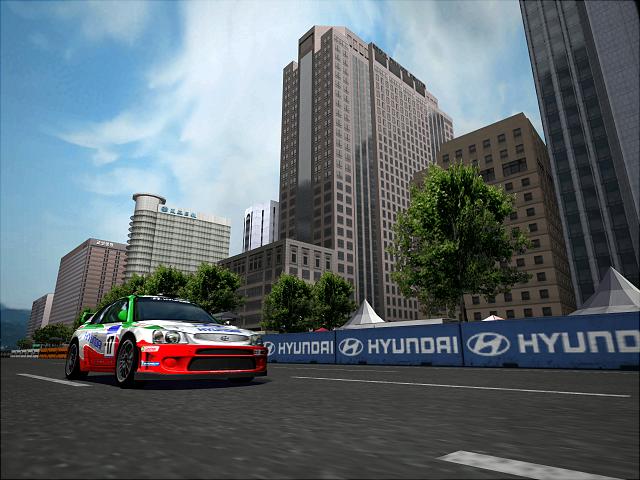
















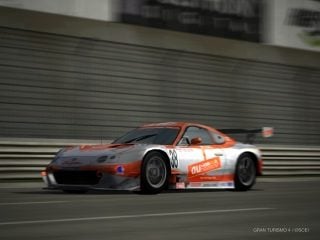

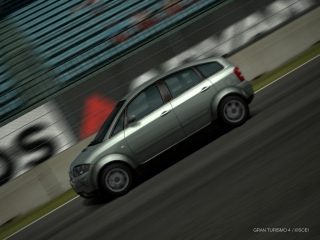
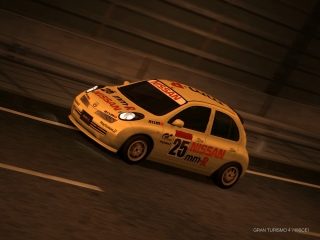









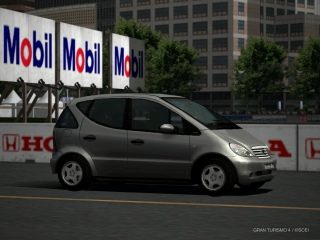
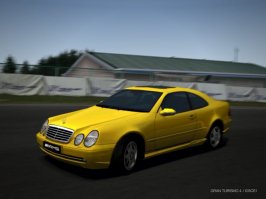

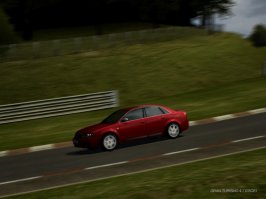
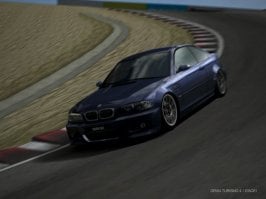
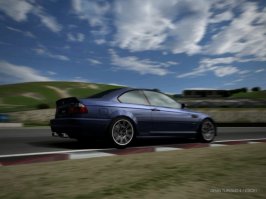

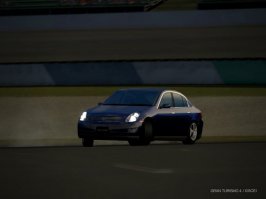
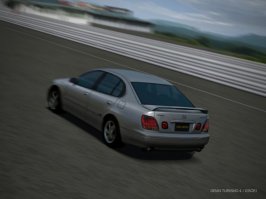
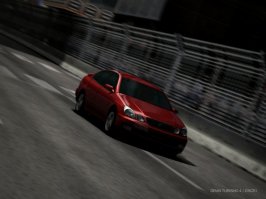
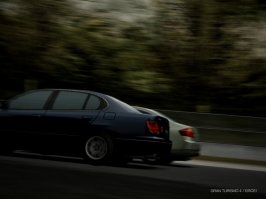


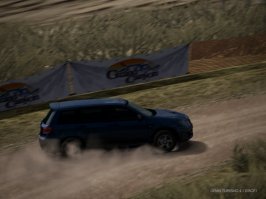
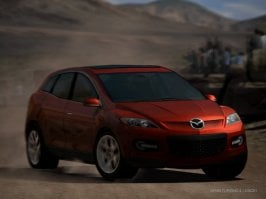





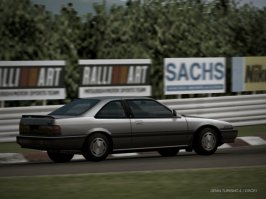

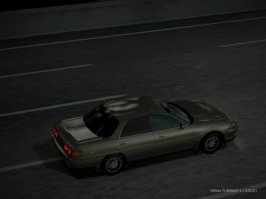
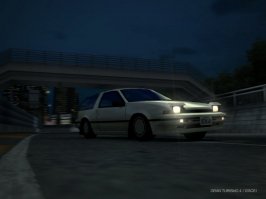
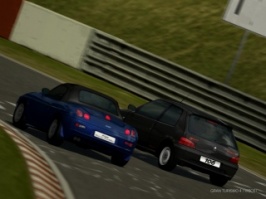
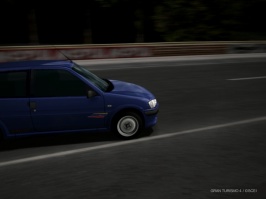

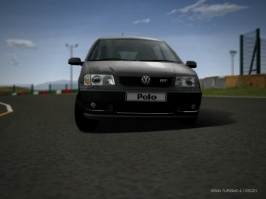
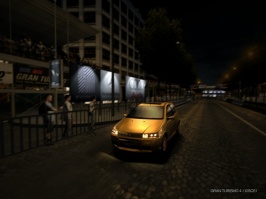
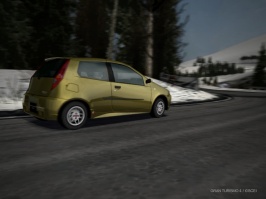
 👍
👍
